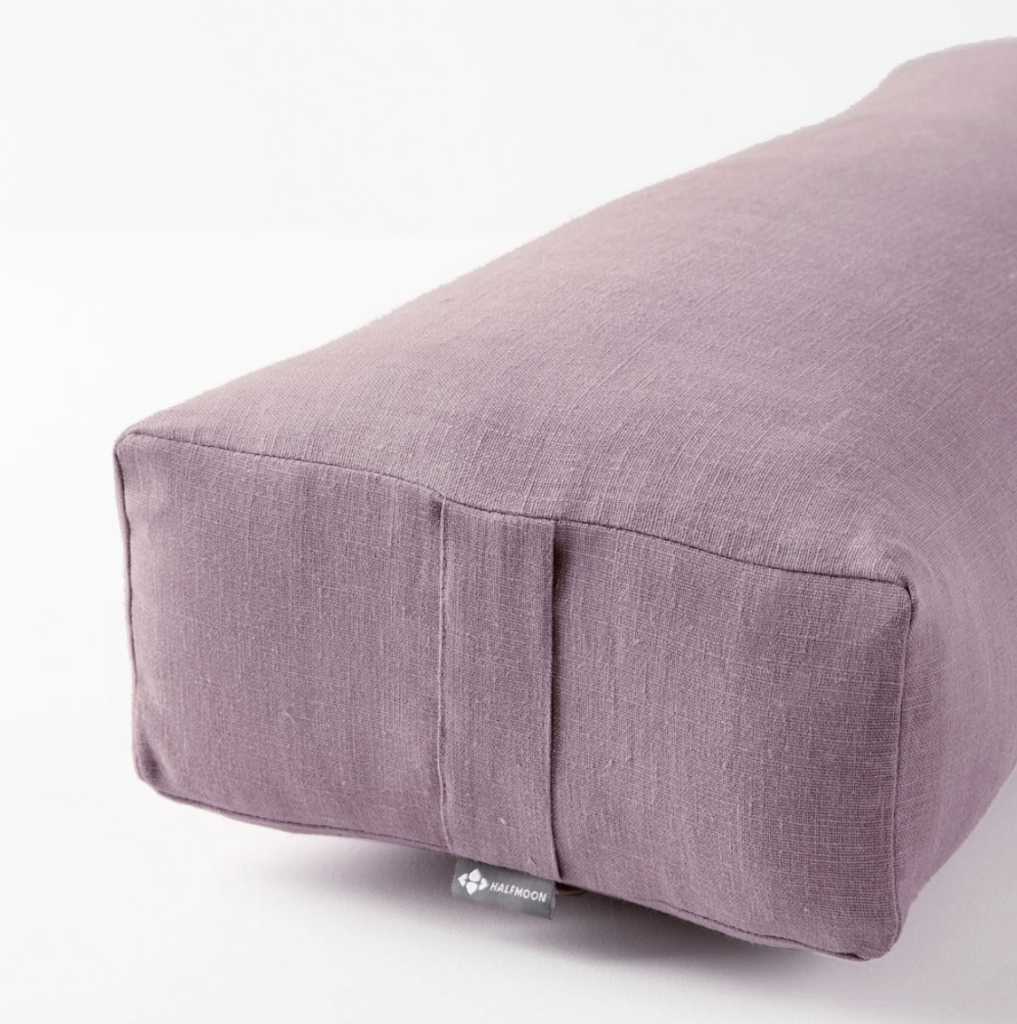It’s no secret that we live in a society obsessed with productivity. In today’s world, it is all-too-common to equate how busy we are with how worthy we feel. To feel productive, we are constantly pushing ourselves to keep doing – pushing our bodies to perform or look a certain way, pushing our brains to continually learn and adapt, pushing through to-do lists, responsibilities, whatever it is that is standing between us and getting things done.
We live in cycles of giving and receiving. If all we do is give and do, then we will inevitably run ourselves dry. When we try to run on empty, usually the first thing we abandon is ourselves.
To fuel ourselves and the life we want to create around us, we must replenish our own supply. We have to get quiet and discover new ways to slow down, be present, and restore ourselves.
Restoration comes from the conscious choice to give to yourself so that you can more freely give to others. When we place as much energy on receiving as we do on producing, we give ourselves the space we need to find balance. To do so requires a deep connection with yourself, mind, body, and spirit, as well as a certain level of self-awareness that can be mindfully cultivated through a practice we all know and love. It all starts with restorative yoga.

Active vs. Passive Yoga
Practicing yoga, in all its forms, is a journey into self-awareness. While there are many different styles and practices, each form of yoga is guiding us closer to our true nature. Who we really are when we disconnect from the external chaos and distractions and consciously connect to the deepest layers of our being. The real, authentic us.
Most people in the western world first approach yoga on a purely physical level. In a classic vinyasa flow class, students will likely experience a series of strengthening postures paired with fluid movements intended to build muscle and increase flexibility in the student. According to Chinese medicine, the powerful movements of a vinyasa sequence are highly reflective of Yang energy – the active energy needed to bring vitality to the body.
The physicality of modern asana has made us intimately familiar with the Yang side of our yoga practice. To power through challenging postures and sequences, we must utilize our strength and inner fire. However, this Yang energy would be incomplete without its more feminine Yin counterpart – the passive energy needed to bring balance to the body. There is a much more subtle side to the practice characterized by relaxing and giving your body space to heal. We call this restorative yoga.
How to Perform Restorative Yoga
A key feature in restorative yoga is the use of props such as blocks, bolsters, and blankets. The props help you hold passive poses for longer without exerting yourself or fatiguing your muscles. Since you’re encouraged to relax fully in each posture while focusing on your breath, restorative yoga allows you to release tension in your muscles and fascia without any strain or discomfort. Regardless of your experience with yoga, a restorative practice allows you to feel comfortable and fully supported.
What is Fascia?
Fascia is a fibrous tissue that ‘connects’ every cell in our body. This connective tissue surrounds and infuses every muscle, fiber, bone, blood vessel, nerve, and organ in our body. Fascia holds us firmly together, yet constantly and miraculously adjusts to accommodate our every movement.
When you have a restriction in your body, your fascia becomes dehydrated, stiff, weak, and stuck. Along with hydration and other healthy lifestyle choices, restorative yoga promotes healthy changes in your connective tissue. By holding postures for several minutes at a time you are able to access your fascia and start to restore fluidity within your connective tissue.

Benefits of Restorative Yoga
Restorative yoga is a place to receive and find ease in a matter of minutes. Instead of muscling through our practice, we get to approach it with relative effortlessness and support. Instead of trying to prove something and overexerting ourselves in our practice, we welcome and rely upon the assistance of props. By enlisting the help of props, we allow ourselves to be fully and completely supported. We are finally able to let go.
At first, restorative yoga may seem counterintuitive to our instinctual desire to always be productive. Even for self-care practices like our exercise routine, we want to feel like we are doing the absolute most with the limited time that we have. We want to see the results and experience them in our own bodies. While we know that barre classes help sculpt long, lean muscles and HiiT classes increase cardiovascular endurance, what is restorative yoga good for exactly?
When we don’t feel the sweat beading down our face or our muscles actively shaking and burning, how beneficial can something so passive really be? What makes a restorative yoga practice worth our precious time?
Reduce Stress and Heal
The truth is, we cannot sustain our Yang energy endlessly. To feel balanced, it must be met by nurturing our Yin energy just as strongly. In restorative yoga, we draw away from an alignment-focused practice to a much more feeling-based experience. We take ourselves outside of the constant need to do, and ground ourselves in the here and now.
When you enter into each restorative posture, you allow your body and mind to release, letting go of tension throughout. In some postures, you might even find a gentle stretch that allows you more freedom within your body.
While restorative yoga doesn’t involve much movement it is often the style of yoga where we face the most amount of resistance. Whether being in your mind or finding comfortable poses to just be in, there is often a lot of fidgeting that takes place at the beginning of class or the start of a new pose. But where there is the most tension, there is the greatest opportunity for release, and true release only occurs with practice.
That is why in a restorative practice, there is usually only 5-6 postures total in 60 minutes. As mentioned before, the use of props is used in combination with these long holds to support the body and find rest. Props allow us to rely less on our muscles to hold us up and instead help us to accept support from an outside source. Typical props seen in a restorative yoga class include bolsters, blocks, and blankets all of which can be found in the Ohana Online shop. Try a restorative yoga class with our highly experienced restorative teachers!

Support The Nervous System
So, what is restorative yoga good for beyond giving our muscles a well-deserved break? Another major benefit to the practice is its ability to nurture our nervous systems, or our parasympathetic nervous systems specifically. By allowing the physical body to relax and restore, our entire system is able to fully reset. Our nervous systems are able to learn a new normal, a normal that is peaceful and nourishing.
Restorative yoga is the ultimate antidote to stress. While some level of stress is necessary to warn us of danger, our nervous systems were never meant to be in a state of constant overdrive. Restorative yoga allows us to become consciously aware of our bodies and breath on a profound new level. It is a deeply meditative experience where we are able to go inward. When we go inward, we are faced with our ownness: who we really are when we strip away all of what we use in the outside world to define ourselves.
Within a 60-minute class, you notice the stress and fears you held that the beginning slowly starts to subside. Calmness washes over you as you let go of your to-do list and focus on passive stretching and the moment right here, right now.
As an added bonus with lowering your stress levels, restorative yoga will also help you sleep better at night. Through reducing cortisol (your stress hormone) you can better relax before going to bed and find more ease in drifting off to sleep.
Create a Meditative State
Many yogis, myself included, have found the restorative practice to be the most supportive style of yoga on their healing journey. Modern science has confirmed this. Embedded deep in the fascia (connective tissue) are neurological cells that respond to stimuli that mirror past trauma. This is why holding certain postures with tension may produce strong feelings or memories in the practitioner. When this occurs, the body actively processes and releases the trauma to be healed.
Healing the physical body is an obvious first benefit – when we are in this totally relaxed state, our bodies finally get a chance to heal themselves on a cellular level. The use of prana or breath also allows us to drop even further into the healing powers. By utilizing the power of slow, deliberate breath we can help reduce or even eliminate the fight or flight conditioning that inevitably rises when the body is put in an unpleasant or uncomfortable position.
Benefits of Restorative Yoga
We live in a culture where it is becoming increasingly difficult to slow down. Restorative yoga is a wonderful way to counteract our busy, modern lifestyle and is the perfect compliment, or precursor, to a meditation and mindfulness practice. Restorative yoga really becomes about your breath, allowing you to enter a deeper state of relaxation.
There are a number of key benefits to restorative yoga, including the following:
- Relaxes your mind and body
- Soothes your nervous system
- Enhances your mood
- Reduces chronic pain
- Improves sleep
- Promotes well-being
- Gentle on your body
Start Your Restorative Yoga Journey
Deep love and appreciation for restorative yoga begin with the power of surrender. What is restorative yoga good for if not for fully embodying this concept? You are the ultimate life-giving energy force capable of both giving and receiving simultaneously. Restorative yoga allows us to live this. It can take us from the dense experience of our hectic lives to the much more subtle layers of our human experience – our energy, our spirit, and eventually bliss.
All it requires from us is surrender.
Regardless of whether you are new to restorative yoga, or just looking to recommit to your practice in the New Year, Ohana Yoga + Barre offers unlimited in-person class for $99 for your first month as well as unlimited on-demand classes with a 14-day free trial. Now you have access to restorative classes to support your practice and find rest.

Erin Entlich is a certified yoga instructor, personal trainer, holistic health coach, and writer. She believes doing good starts with feeling good, which is why she loves helping people weave movement, mindfulness, and healthy eating into their daily lives. Find out more at www.erinentlich.com.